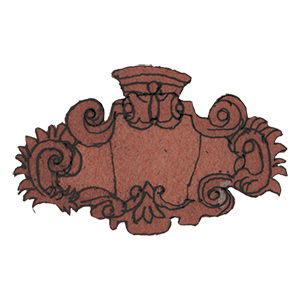2
The Land of Red Porphyry
No visitor to Central Saxony can pass by without seeing the typical colours everywhere: used as window lintel, door decoration, historical tombstone or even as the cladding of an entire building.
If the origin of the sandstone lies in the primeval Thetis Sea, the porphyry was born of fire; more precisely, it was a volcano whose gigantic ejection of magma and ash more than 260 million years ago heaped up a huge mountain and led to the formation of the red tuff, which is called Rochlitzer Pophyr after the place where it was found.
As early as the Bronze Age, exposed chunks of rock were processed into millstones, and from the twelfth century onwards porphyry was mined in quarries. Around the same time, the stone experienced its first heyday as a building material, as the Wechselburg Basilica and the Rochlitz Kunigunden Church attest. A few centuries later, Hieronymus Lotter used it to build the Leipzig Old Town Hall, and the townspeople and farmers in the surrounding countryside also decorated their houses and farmsteads with the red tuff.
Because porphyry can be worked like a soft stone, it quickly became of interest to sculptors and stonemasons, because the softer the stone, the more delicate the possibilities. With its magnificent colours, alternating between red and violet, it was even the first German stone to make it onto the list of natural world stone heritage.
And even though porphyry lead a rather shadowy existence in GDR architectural history, it was remembered in Leipzig when the demolished Hotel de Saxe got a successor: It was given a neo-baroque portal made of warm red stone.